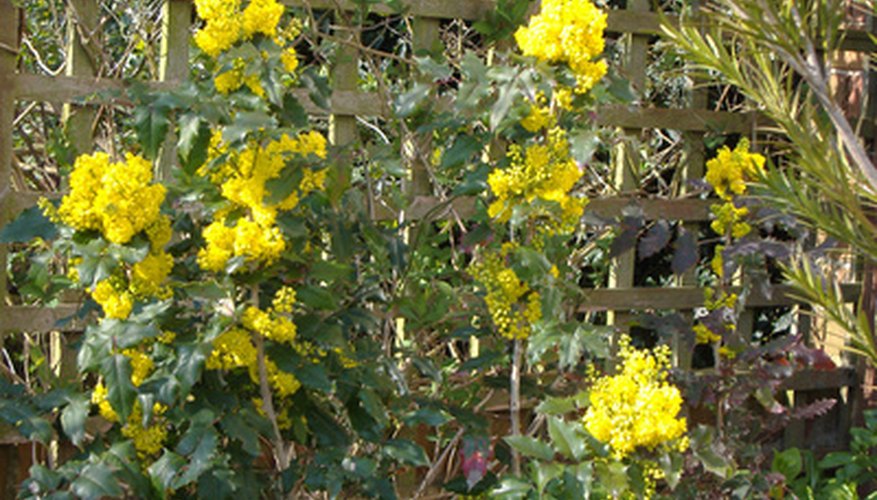Mahonia is a wild shrub with leaves of up to 18 inches long on tall stalks. In the spring and summer the plant produces yellow flowers that are replaced by dark purple-coloured berries in the fall. The berries resemble grapes; this has earned the Mahonia the alternate name of Creeping Grape. Transplanting Mahonia plants is best done when they are young. Transplanting older Mahonia plants can be accomplished as long as you do not damage their extensive root system.
- Mahonia is a wild shrub with leaves of up to 18 inches long on tall stalks.
- Transplanting older Mahonia plants can be accomplished as long as you do not damage their extensive root system.
Wait until the fall, after the Mahonia plant has stopped producing flower blooms, before attempting to transplant it.
Cut all of the Mahonia stalks to 2 feet high using pruning shears. This will help the plant to recover faster after transplanting.
Insert a shovel into the soil approximately 1 1/2 feet away from the base of the Mahonia plant. Lean back on the shovel to loosen the soil. Continue using this method to loosen the soil all the way around the Mahonia plant in a circular pattern.
- Insert a shovel into the soil approximately 1 1/2 feet away from the base of the Mahonia plant.
- Continue using this method to loosen the soil all the way around the Mahonia plant in a circular pattern.
Have another person grasp the soil at the base of the Mahonia plant and lift up gently. Use your hands to gently dig the remaining root system out of the ground.
Choose another planting location that has partial to full sunlight and well-drained soil.
Dig a hole that is the same depth as the root of the Mahonia plant and three times as wide.
Place the roots of the Mahonia into the hole and cover the roots with soil. Pack the soil down firmly around the base of the plant.
Water the soil around the base of the newly planted Mahonia with water until the ground is thoroughly saturated.
